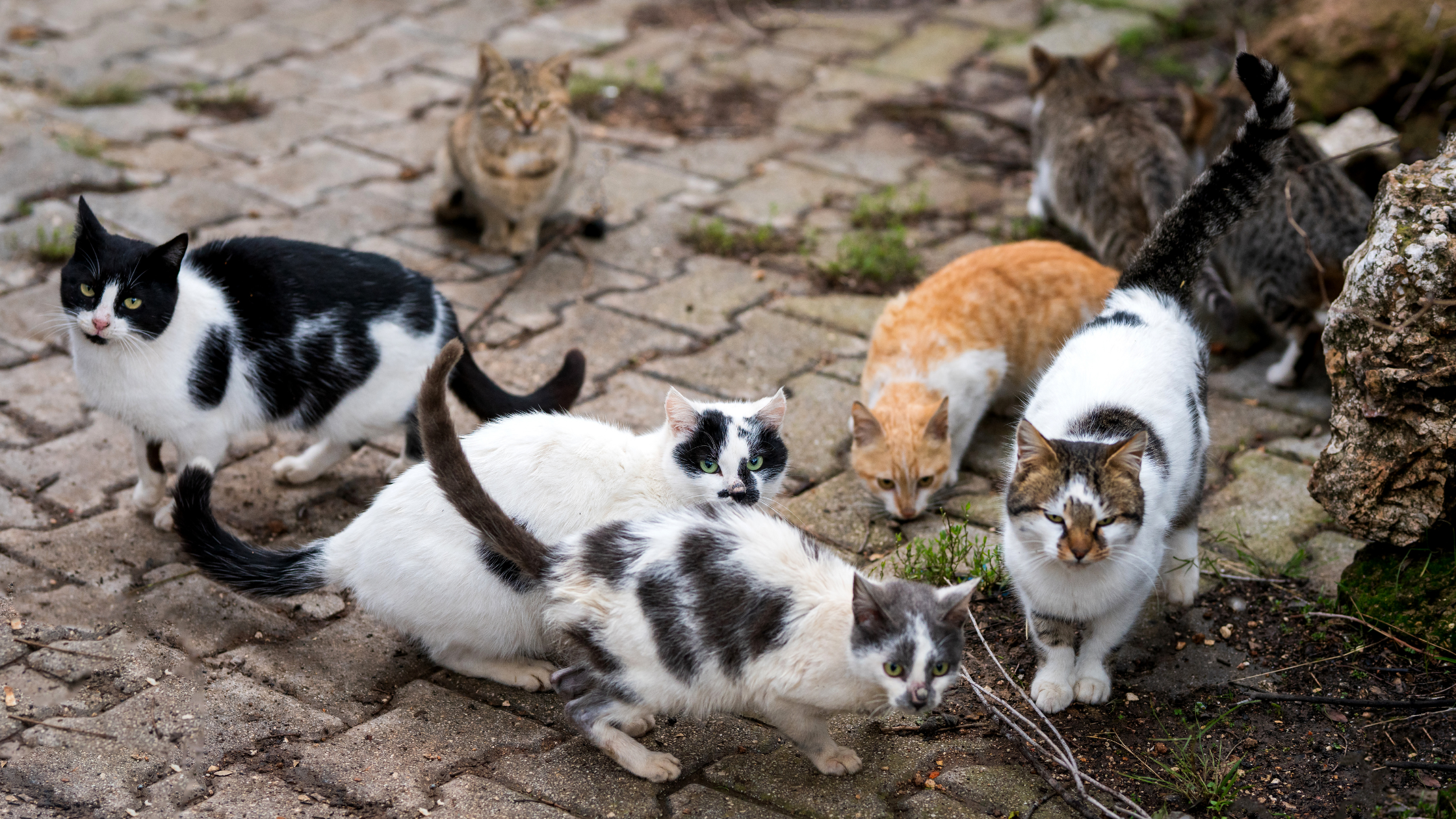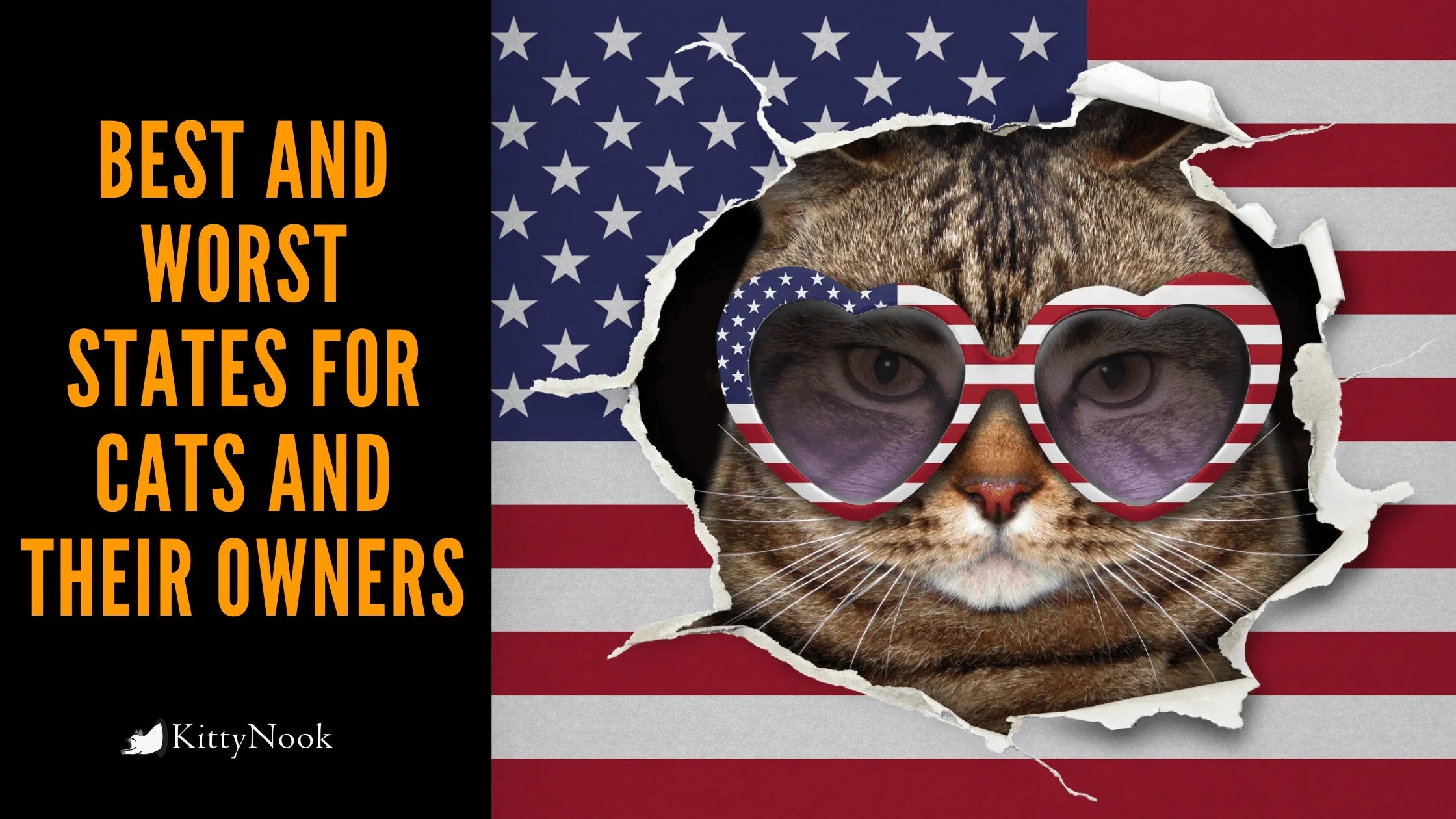Is your state feline friendly? Are there sufficient vets and pet stores to provide your cat with their needs? Does your state have no-kill shelters? What is the heartworm condition price in your state? Are there plenty of cats and cat owners to befriend?
What is the animal welfare legislation in your state? You will undoubtedly immunize your kitty against rabies; however, for rabies to be eliminated, every pet, be it a cat, dog, or ferret, should be inoculated.
Here are the top 3 of the best and worst states for cats and their proprietors based on these criteria. Let us start with the best ones, of course!

Oregon
Oregon has some pretty rigorous policies for pet owners. It is mandatory to vaccinate your pets against rabies. Oregon laws specify that cats, as well as other pets, should have sufficient food and a shelter that is secure as well comfortable. Now, it's a bit wet and cold in Oregon. Therefore parasites are an issue, plus there are land dangers such as coyotes, so your cat might be better off as an indoor one.
Vermont
Practically fifty percent of the Vermont population possesses a cat. If you're checking out Vermont for autumn foliage or winter season skiing, bring a feline with you. There are a lot of pet-friendly inns and resorts. There are a lot of good groomers in the state. Presently, there is the blacklegged deer tick to stress over, so inspect your cat daily for these bloodsuckers.
Maine
This is the home state of the Maine Coon Cat, but is it an excellent place to have a feline? Almost half the populace thinks so! The legislation in Maine requires all pets to be vaccinated against rabies by a certified veterinarian. While shelters in Maine might humanely euthanize a feline, they cannot give or sell them to research facilities.
And now, the worst states for cats!

Utah
People of Utah aren't really into cats. Barely a quarter of the populace has felines, and no-kill shelters are uncommon. The air pollution in the state also affects cats' health and wellness.
To be fair, Utah was on its way to being a no-kill state. However, an abrupt rise in the kitten population has stopped those plans: neuter and spay, everyone! Kittens are adorable, but sometimes the kindest thing we can do for them is not to let them be born.
Louisiana
People of the Pelican State are more of dog persons. Louisiana calls itself the "Sportsman's Paradise" and probably does not want competition from nature's best hunter.
Heartworms, alligators, snakes, as well as predators also make this a harsh state for felines. Raccoons and marsupials will take the cat's food, and red-tailed hawks will take the whole cat! Just recently, in Kenilworth, the coyotes are restless. Let us face it, water-hating cats will not have fun on the bayou.
Washington, DC.
While this is a beautiful location for fat cats of the two-legged variety, four-legged ones will not have such a fun time. There's only one no-kill shelter in the area, and apartments or condos in the state aren't specifically pet-friendly.
D.C. does have a bit of a rat problem that some feral pet cats are being brought in to deal with. This is good for feral pet cats that could be classified as unpleasant but now have a valuable purpose.
The state is suitable for people that don't want rats around, but it might not be ideal for pet cats that may not like sharing an area with a territorial feral cat.
And more questions...
What state has the most feline owners?

That would be Vermont. Cat is so cherished here. The college basketball group is called The Vermont Cats. Their mascot, Rally the Cat, can be seen at games giving people high fives!
Recently, regulation has been passed, requiring trappers to report trapped animals as well.
What state has the most feral cats?

This is a challenging subject to research. Of the approximately fifty million feral felines in the U.S.A., somewhere between 4,691 to 26,000 can be found in Lafayette, Indiana. This city and several others take part in TNR programs. If the feral cats are not fit for the indoor cat way of life, the next best thing would be to prevent them from being a threat to public health.
What countries love felines the most?

China and Russian are fans of cats, but ultimately, it is the U.S. of A!
One in three families owns a cat in the U.S.A., with an average of roughly two felines for every cat-owning home. Of these, the majority were from friends and family, while 34% were strays taken on.
How many stray cats exist in the United States?

There is an estimated fifty-eight million stray cats in the U.S.A. Spay or neuter your cats, please! Additionally, ensure that your cat always has some I.D. in the form of a tag or silicon chip.
If you find that you can no longer look after your cat, rehome them by passing them on to a trusted friend or relative and even the animal sanctuary. Never leave a pet in the wild.
Which states have an official State Cat?

Lots of states like to embrace particular pets as their symbols. Birds, bugs, fish, and also dinosaurs can be so identified. Many states have an official State Dog as a symbol, but only a few have a State Cat. Colorado has diplomatically chosen to declare all shelter dogs and cats as their state pets.
Maine is naturally rather proud of their Maine Coon cats. Maryland appreciates the calico for having the coloring of a Maryland flag.
Massachusetts may have thought that the M on a tabby's head symbolizes the name of their state and has embraced this coloration as their State Cat.
Conclusion
Some states love cats. Some like dogs. It appears that mainly the New England states love cats. A feline could make a loving home near the harbors, where they came to America as ship mousers.
Out in the farmland, felines could be happy chasing mice and sleeping in the barn, but pets are needed to herd livestock and go searching on the weekend breaks.
Show your pet cats love by spaying or neutering, getting them vaccinated, and seeing that they have sufficient food, clean water, and a safe home.





















